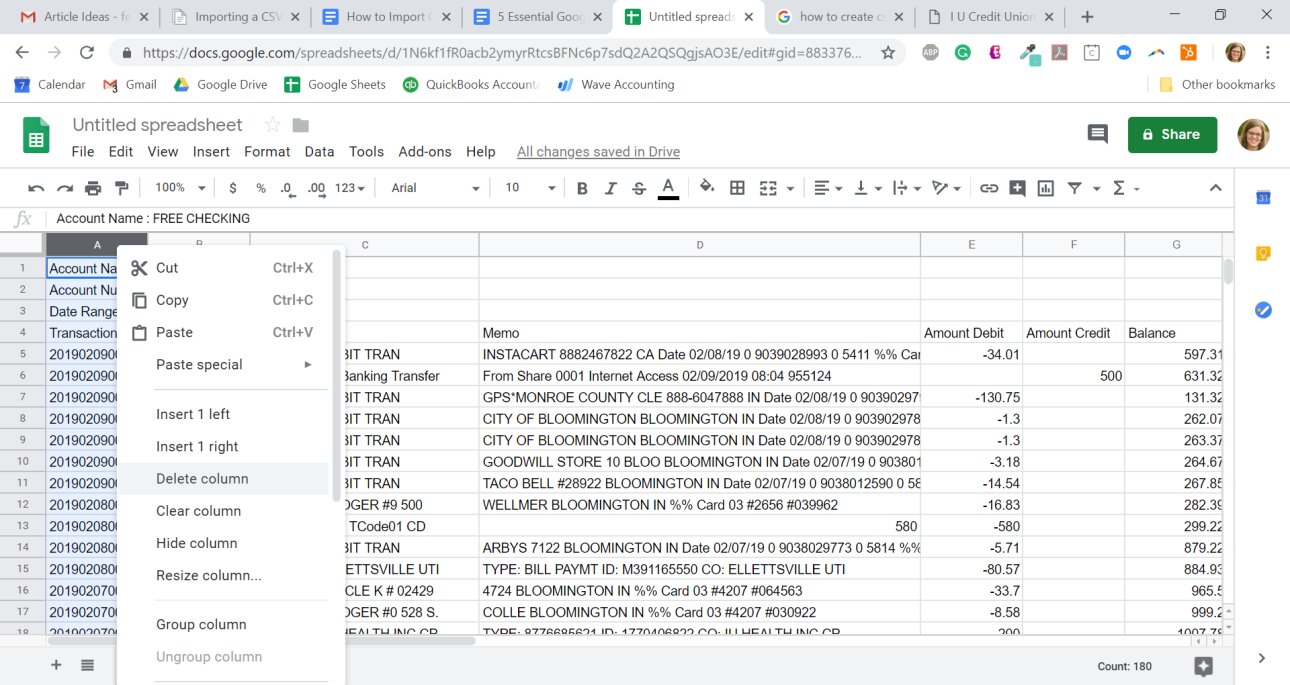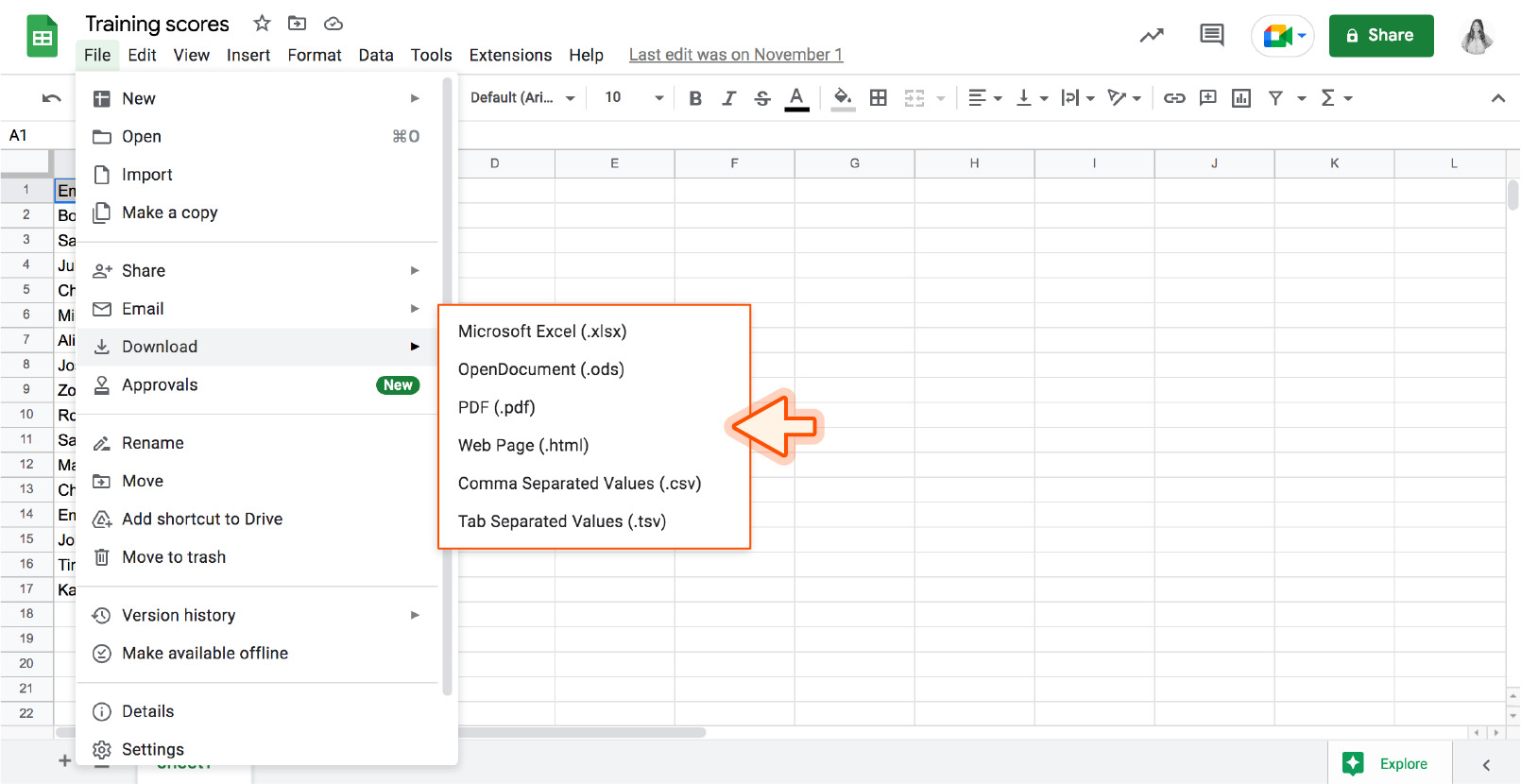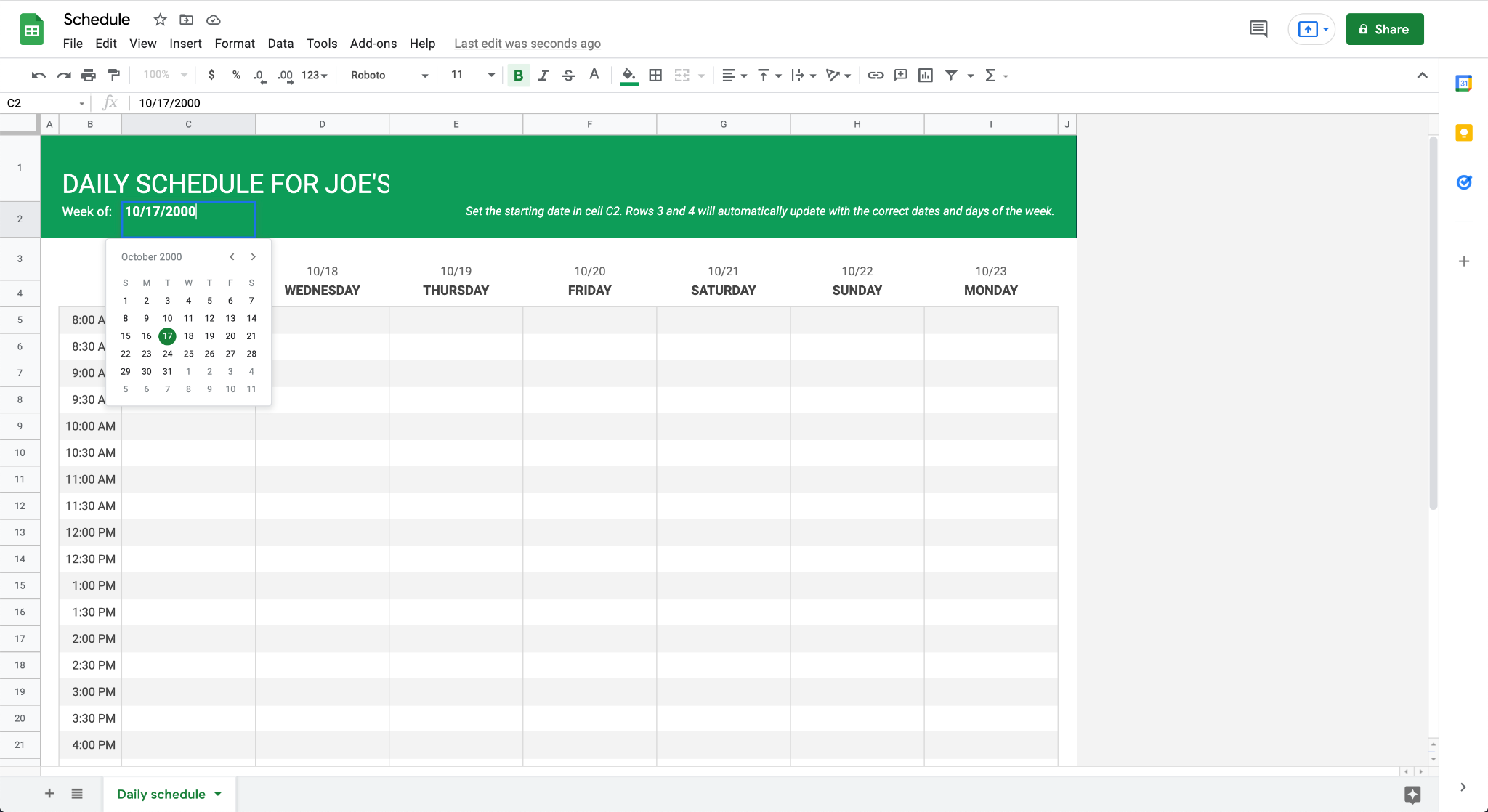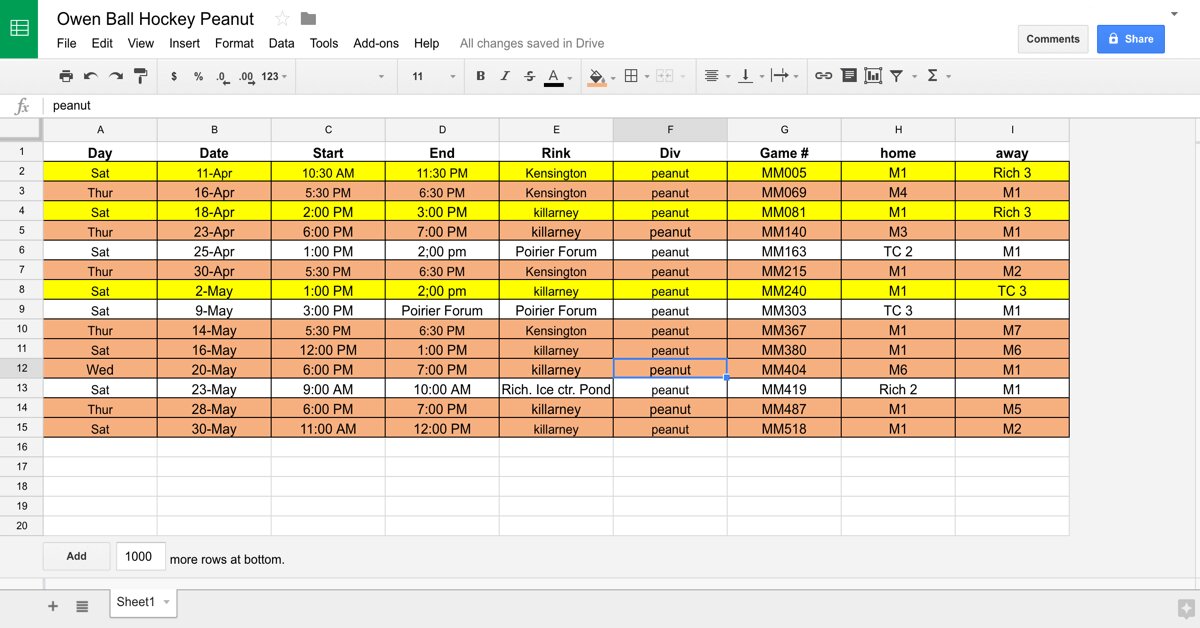Introduction
Welcome to this step-by-step guide on how to open a CSV file in Google Sheets. CSV (Comma-Separated Values) files are commonly used for storing and organizing data, and Google Sheets provides a convenient and accessible platform for viewing and editing these files. Whether you’re a beginner or an experienced user, this tutorial will walk you through the process, making it easy for you to access and work with your CSV files within Google Sheets.
CSV files are widely used in various industries, including finance, marketing, research, and more. They offer a simplified way of storing data by separating each value in a row with a comma. This format makes it easier to import and export data across different software applications, making CSV files a versatile and widely accepted file format.
Google Sheets, a web-based spreadsheet application, allows you to open and manipulate CSV files online, eliminating the need for additional software installations or compatibility issues. With its collaborative features and integration with other Google services, Google Sheets offers a user-friendly and efficient way to work with CSV files.
In the following sections, we’ll walk you through the step-by-step process of opening a CSV file in Google Sheets, from logging in to your Google account to importing and configuring the CSV file. By the end of this guide, you’ll be able to effortlessly access and work with your CSV files using Google Sheets.
Why Use Google Sheets for Opening CSV Files
When it comes to opening CSV files, there are several reasons why Google Sheets is a great choice. Let’s explore some of the advantages it offers:
- Accessibility: Google Sheets is a cloud-based application, which means you can access it from any device with an internet connection. Whether you’re using a computer, tablet, or smartphone, you can easily open and view your CSV files using Google Sheets, making it a convenient option for users who need to access their data on the go.
- No Software Installation: Unlike traditional spreadsheet software, Google Sheets doesn’t require any software installation. Everything is done online, directly through your web browser. This not only saves you time but also eliminates the need to worry about software compatibility or updates. Simply log in to your Google account, and you’re ready to go.
- Collaboration: One of the standout features of Google Sheets is its collaboration capabilities. You can easily share your CSV files with others, allowing multiple users to view and edit the data simultaneously. This makes it ideal for teams or individuals working on projects that require real-time collaboration and data analysis.
- Integration: Google Sheets seamlessly integrates with other Google productivity apps, such as Google Docs and Google Slides. This allows you to import data from your CSV files into other documents or presentations, facilitating data analysis and visualizations. Furthermore, Google Sheets offers integration with third-party tools and services through add-ons, expanding its functionality and customization options.
- Data Manipulation: Google Sheets provides a wide range of powerful tools and functions for manipulating data. Whether you need to filter, sort, or perform complex calculations on your CSV data, Google Sheets offers a versatile set of features that can help you analyze and understand your data more effectively.
With its accessibility, collaboration features, integration options, and powerful data manipulation tools, Google Sheets is a reliable and efficient choice for opening and working with CSV files. Now that you understand the benefits, let’s move on to the step-by-step process of opening a CSV file in Google Sheets.
Step 1: Login to your Google Account
The first step to opening a CSV file in Google Sheets is to log in to your Google account. Google Sheets is a part of the Google Drive suite of applications, so you’ll need a Google account to access it.
If you already have a Google account, simply open your web browser and go to the Google homepage. Click on the “Sign in” button at the top right corner of the page. Enter your email address and password and click “Next” to proceed.
If you don’t have a Google account, you can easily create one by clicking on the “Create account” link on the sign-in page. Follow the prompts to set up your account with an email address and password.
Once you’re logged in to your Google account, you’ll have access to various Google services, including Google Sheets.
It’s important to note that using your Google account ensures your CSV files are securely stored in the cloud and can be accessed from any device. Additionally, logging in allows you to take full advantage of the collaboration features offered by Google Sheets.
Now that you’re logged in to your Google account, you’re ready to move on to the next step: accessing Google Sheets.
Step 2: Go to Google Sheets
Once you’re logged in to your Google account, the next step is to navigate to Google Sheets. Google Sheets is a web-based spreadsheet application that allows you to create, edit, and analyze data in a collaborative environment.
To access Google Sheets, open your web browser and enter the following URL: https://docs.google.com/spreadsheets. Alternatively, you can go to the Google homepage and click on the “Apps” icon in the upper-right corner (represented by a grid of small squares) and select “Sheets” from the list of available Google apps.
Both methods will take you to the Google Sheets homepage, where you can manage your existing spreadsheets or create new ones.
Google Sheets provides a user-friendly interface, similar to other spreadsheet applications, with menus, toolbar, and a large workspace area to work with your data. On the left side of the interface, you’ll find a panel displaying your saved spreadsheets, which you can organize in folders or access directly.
If you’re new to Google Sheets, take a moment to familiarize yourself with the interface and various functions available. Google Sheets offers a range of features and tools to help you manipulate and analyze your data efficiently.
Now that you’re on the Google Sheets homepage, you’re ready to proceed to the next step: creating a new blank spreadsheet to open your CSV file.
Step 3: Create a New Blank Spreadsheet
Now that you’re on the Google Sheets homepage, it’s time to create a new blank spreadsheet. This will provide you with a space to import and view your CSV file contents.
To create a new blank spreadsheet in Google Sheets, follow these simple steps:
- On the Google Sheets homepage, click on the red “+ New” button located in the top-left corner of the screen.
- A drop-down menu will appear. Select “Blank spreadsheet” from the options presented. Alternatively, you can also choose from one of the available templates if it fits your needs.
- A new blank spreadsheet will be created and opened, ready to be populated with your CSV file data.
Google Sheets provides a grid-like interface where you’ll find columns represented by letters (A, B, C…) and rows represented by numbers (1, 2, 3…). This makes it easy to navigate and organize your data effectively.
Take a moment to explore the various features and functions available in Google Sheets. You can access these through the menus and toolbar located at the top of the interface. You’ll find options to format cells, apply formulas, create charts, and much more.
Now that you have a new blank spreadsheet ready, you’re one step closer to opening your CSV file in Google Sheets. In the next step, you’ll learn how to import your CSV file into the spreadsheet.
Step 4: Import the CSV File
With your blank spreadsheet created in Google Sheets, it’s time to import your CSV file. Google Sheets provides a straightforward process for importing CSV files, allowing you to quickly access and work with your data.
Follow these steps to import your CSV file into Google Sheets:
- In your blank spreadsheet, click on the “File” menu located at the top-left corner of the interface.
- From the drop-down menu, select the “Import” option and then choose “Upload” from the sub-menu.
- A file explorer window will appear. Click on the “Select a file from your device” button.
- Navigate to the location where your CSV file is stored on your device and select it.
- Click on the “Open” button to begin the upload process.
Google Sheets will start importing your CSV file and display a dialog box with import settings. In the next step, you’ll configure these settings to ensure your CSV file is imported correctly.
It’s important to note that Google Sheets allows you to import not only local CSV files but also CSV files located in your Google Drive or on the web. This flexibility provides you with various options to access and import your CSV data.
Now that you’ve successfully uploaded your CSV file, let’s move on to the next step to configure the import settings.
Step 5: Configure Import Settings
After uploading your CSV file in Google Sheets, it’s essential to configure the import settings to ensure that your data is displayed accurately. Google Sheets provides options for customizing the import process, allowing you to specify how the CSV data should be interpreted and organized.
- In the “Import File” dialog box, you’ll see a series of import settings to configure.
- First, select the separator used in your CSV file. By default, Google Sheets detects the separator automatically, but you can choose a different option if needed. Common separators include commas, tabs, and semicolons.
- If your CSV file contains text in quotation marks or has multiple lines in a cell, check the “Allow quoting” option. This ensures that Google Sheets recognizes the text and preserves the formatting accurately.
- Next, choose the character encoding used in your CSV file. Google Sheets defaults to UTF-8 encoding, which is commonly used. However, if your CSV file has a different encoding, make sure to select the appropriate option from the encoding menu.
- Lastly, review the “Preview” section to ensure that your CSV file is displayed correctly. The preview allows you to see how your data will be imported into Google Sheets before finalizing the import process.
- Once you’ve configured the import settings, click on the “Import data” button to proceed. Google Sheets will import your CSV file according to the specified settings.
Configuring the import settings is crucial to ensure that your CSV file is imported accurately into Google Sheets. Reviewing and verifying the preview of your data helps you avoid any potential issues or mismatches.
Now that you’ve configured the import settings successfully, let’s move on to the final step: opening and working with your CSV file in Google Sheets.
Step 6: Open the CSV File in Google Sheets
After configuring the import settings, it’s time to open and view your CSV file in Google Sheets. With the import complete, Google Sheets will display your CSV data in a structured manner, making it easy for you to analyze and manipulate the information.
- Once the import process is finished, Google Sheets will automatically open the imported CSV file in a new sheet within the spreadsheet.
- The data from your CSV file will be organized in rows and columns, following the configuration you specified earlier.
- You can navigate through the data by using the scrollbars or clicking on the sheet tabs at the bottom of the screen.
- If your CSV file contains multiple sheets, you can access them by clicking on the respective sheet tabs.
- Use the powerful tools and features of Google Sheets to analyze, manipulate, and visualize your CSV data. You can apply formulas, format cells, create charts, and much more.
Google Sheets provides a familiar spreadsheet interface, allowing you to work with your CSV data seamlessly. The column headers and cell values will be preserved, ensuring that your data is intact and ready for further analysis or collaboration.
Remember to save your Google Sheets document to ensure that your changes and modifications are retained. Google Sheets automatically saves your progress as you work, but it’s always a good practice to click on the “File” menu and choose “Save” or use the keyboard shortcut (Ctrl + S) periodically.
Congratulations! You have successfully opened and accessed your CSV file in Google Sheets. You can now leverage the power of Google Sheets to manipulate and analyze your data efficiently.
Feel free to explore the various features and options available in Google Sheets to further enhance your data analysis and presentation. From creating pivot tables to generating insightful charts, Google Sheets provides numerous tools to help you make the most out of your CSV file.
Now that you’ve completed the step-by-step process, you can confidently open any CSV file in Google Sheets and enjoy the benefits of this powerful online spreadsheet application.
Conclusion
Opening a CSV file in Google Sheets is a straightforward process that allows you to access and work with your data effortlessly. Whether you’re a business professional, researcher, or student, Google Sheets provides an accessible and powerful platform to manipulate and analyze CSV files.
In this step-by-step guide, we covered the entire process of opening a CSV file in Google Sheets. We started by logging in to your Google account and navigating to Google Sheets. Then, we created a new blank spreadsheet and imported the CSV file, configuring the necessary import settings along the way. Finally, we opened the CSV file in Google Sheets, ready to explore and utilize its robust set of features.
By using Google Sheets, you benefit from its accessibility, collaboration capabilities, and integration with other Google services. You can access your CSV files from any device, collaborate with team members in real-time, and seamlessly integrate your data into other documents or presentations.
Additionally, Google Sheets offers a range of powerful tools and functions for data manipulation, allowing you to filter, sort, calculate, and visualize your CSV data effectively. With its intuitive interface and user-friendly features, Google Sheets empowers you to analyze your data and gain valuable insights.
So, next time you have a CSV file that needs to be opened and worked on, remember to leverage the power of Google Sheets. With just a few simple steps, you can import and view your CSV data, ultimately enhancing your productivity and streamlining your data analysis process.
Start exploring Google Sheets and experience the convenience and versatility it offers for opening and working with CSV files. Embrace the power of cloud-based collaboration and enjoy the benefits of seamless integration and powerful data manipulation tools.
Now that you have the knowledge and skills, it’s time to dive into your CSV files in Google Sheets and unlock the full potential of your data!

























